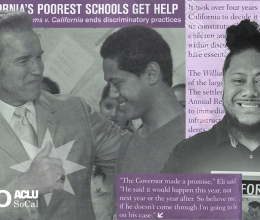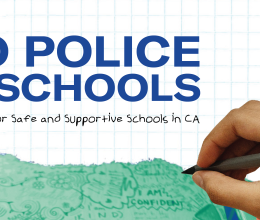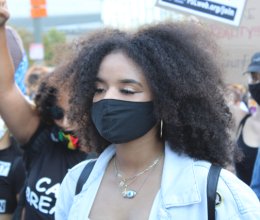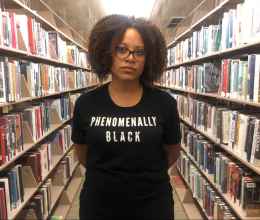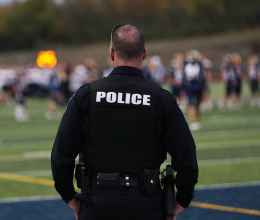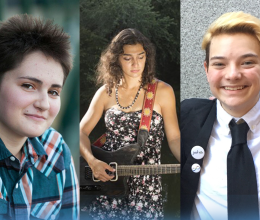
Students deserve to attend supportive and well-resourced schools, where they feel safe. And, as students across the country are calling for common sense gun control, the Trump administration has instead proposed to “harden” schools by increasing the numbers of armed police in schools and by arming teachers and school staff. These proposals, while cloaked in the language of “school safety,” are most likely to hasten the process of transforming schools into something more akin to penal institutions while increasing the risk to students.
Trump's plan will likely have a "net-widening" effect of unnecessarily bringing more students into conflict with police and school staff, students who are there to pursue future options in life, not to cause large-scale harm to the school community. Armed staff in schools can sow distrust between students and school staff, criminalize students, and further heighten tensions on campus. Researchers have consistently found that such measures harm students’ trust in educators, undermine positive school climate, and make it difficult for educators to create a safe and supportive environment for students that is conducive to learning. Ultimately, a lack of trust will result in students being reluctant to report issues to school staff and will only cause our schools to be less safe.
Arming teachers will increase risk to students and school personnel. Under President Trump’s plan, 20 percent of teachers, or roughly 700,000 teachers, would keep a firearm in the classroom. The presence of hundreds of thousands of guns on campuses increases the likelihood that students or school personnel will gain access to firearms and accidentally hurt each other. Studies demonstrate that, unsurprisingly, people are far more likely to be shot, either by suicide, accident, or homicide, when more guns are available.
Recently, a teacher fired a gun while barricaded in a classroom, and last week alone there have been several accidental gun discharges at schools, including by a school resource officer at a middle school and by a teacher, the latter resulting in injury to a student. Many law enforcement agencies across the country have firmly opposed the proposal to arm school personnel, emphasizing that police and first responders will not be able to distinguish between the attacker and armed school staff when attempting to secure the premises.
As with many purported "school safety" policies, the impacts of this misguided proposal will be felt disproportionately by students of color, students with disabilities, and other groups who are already negatively impacted by punitive and discriminatory school policies. Black students are 3.4 times more likely than white students to be subject to a school-related arrest, and students with disabilities account for 25 percent of arrests at school but only 12 percent of the student population.
School personnel also disproportionately use physical punishments, restraints, and seclusion against students of color and students with disabilities. Black students are twice as likely to be hit by their teachers as punishment. Students with disabilities represent 12 percent of the student population but 67 percent of those subject to physical restraint or involuntary confinement in school. Against this backdrop, some parents fear that implicit bias may impact the ways in which armed teachers and police officers interact with students.
Law enforcement already has a significant presence in U.S. schools – roughly 24 percent of public elementary schools and 42 percent of public high schools have sworn police officers, but these officers have not effectively improved student safety. Research indicates that putting police in schools does not lead to lower rates of violence, and several recent mass shootings occurred in places where armed police officers were on duty. While police officers may at times play a role in responding to school violence — as a school officer did in Maryland last Tuesday — stationing permanent armed officers on campuses comes with significant negative consequences and is also not the most effective way to prevent school violence.
Instead of spending scarce resources on armed school personnel, we need to invest in preventing school violence. School districts across the country lack sufficient funding to invest in qualified and effective teachers, maintain facilities and resources, and provide the other resources necessary to educate our students. According to the U.S. Department of Education, 1.6 million children attend public schools that have police officers but no counselors, and three of the five largest school districts in the country hire more security officers than counselors. It is unacceptable to propose spending money on firearms and additional armed officers in schools while refusing to invest in resources that will promote student safety.
Youth across the U.S. are fighting to go to schools where they can learn and be safe. We should not respond to their call to action with policies that will further endanger, alienate, and criminalize them. We must reject calls for putting more guns in schools and instead do the more meaningful work of creating the safe and supportive spaces our youth deserve.
